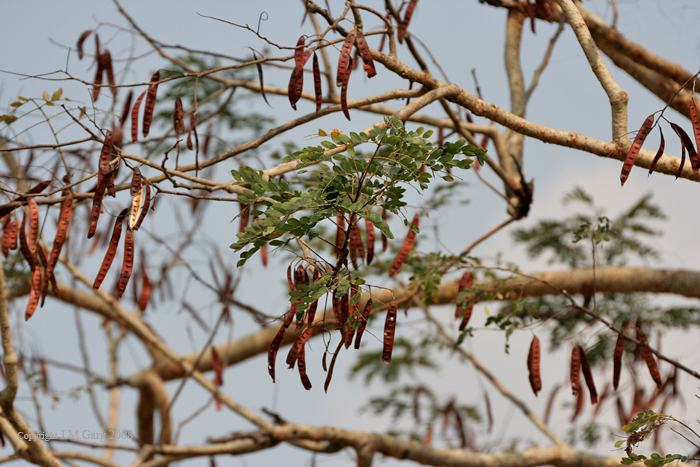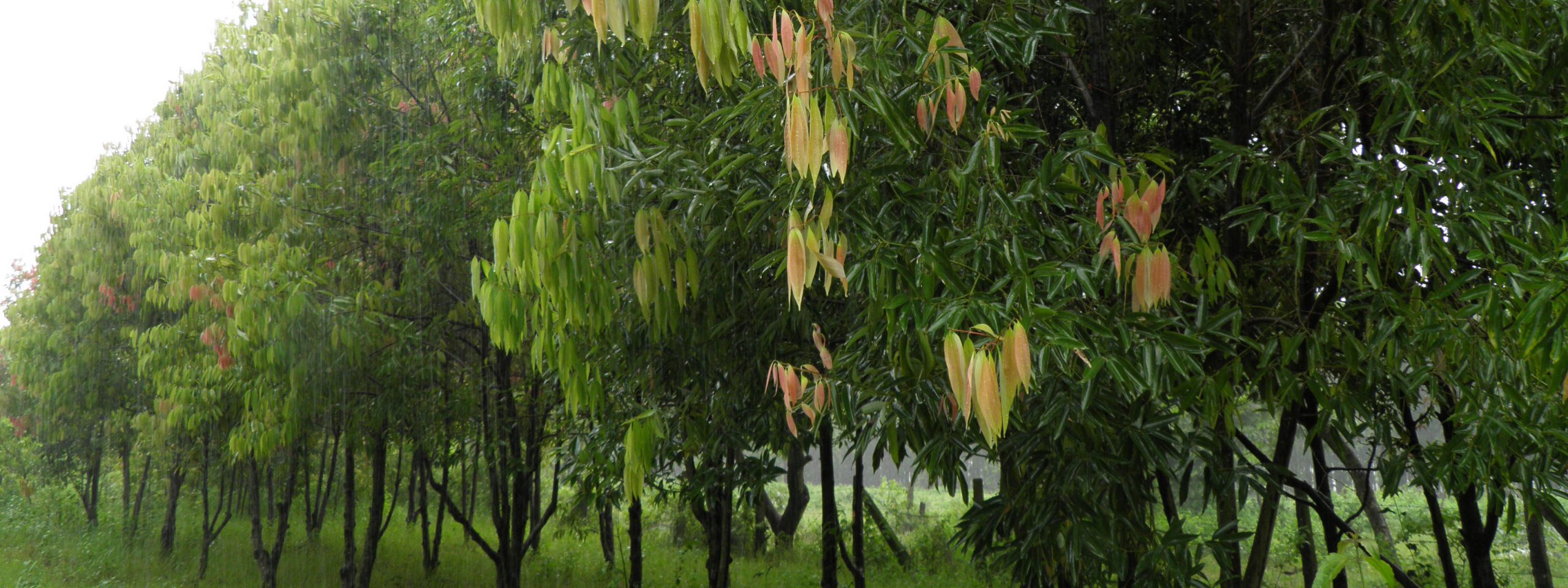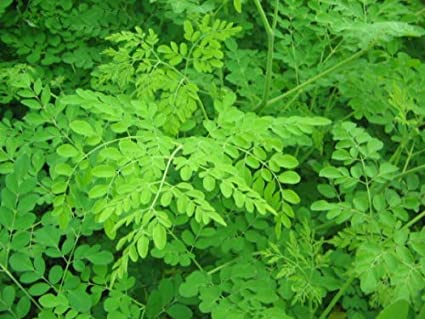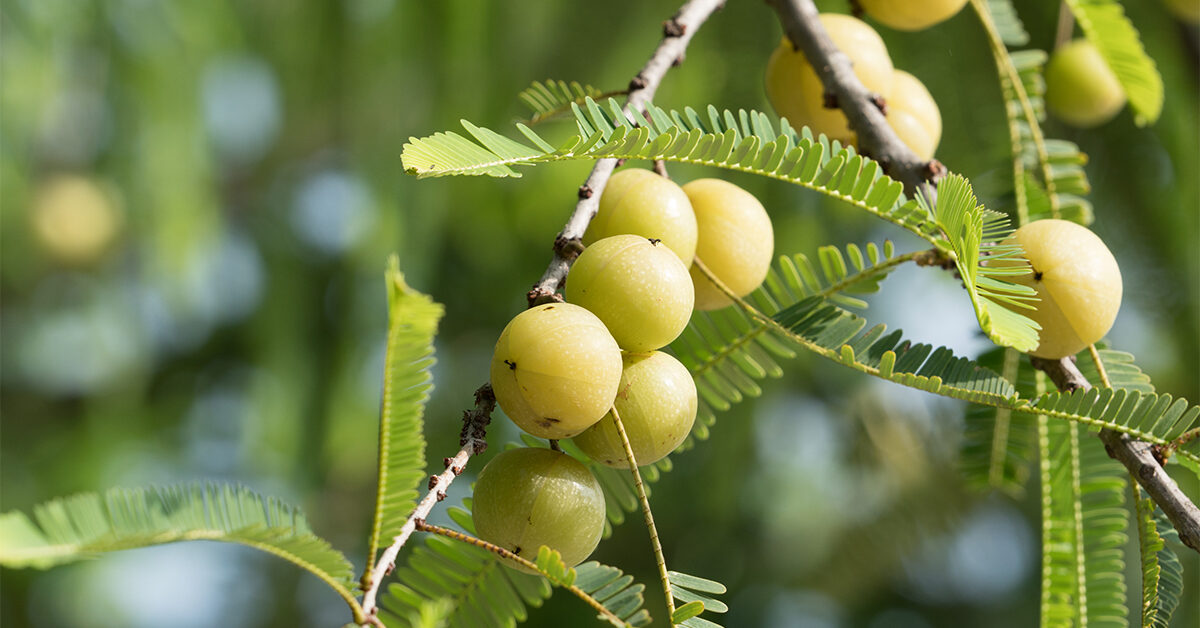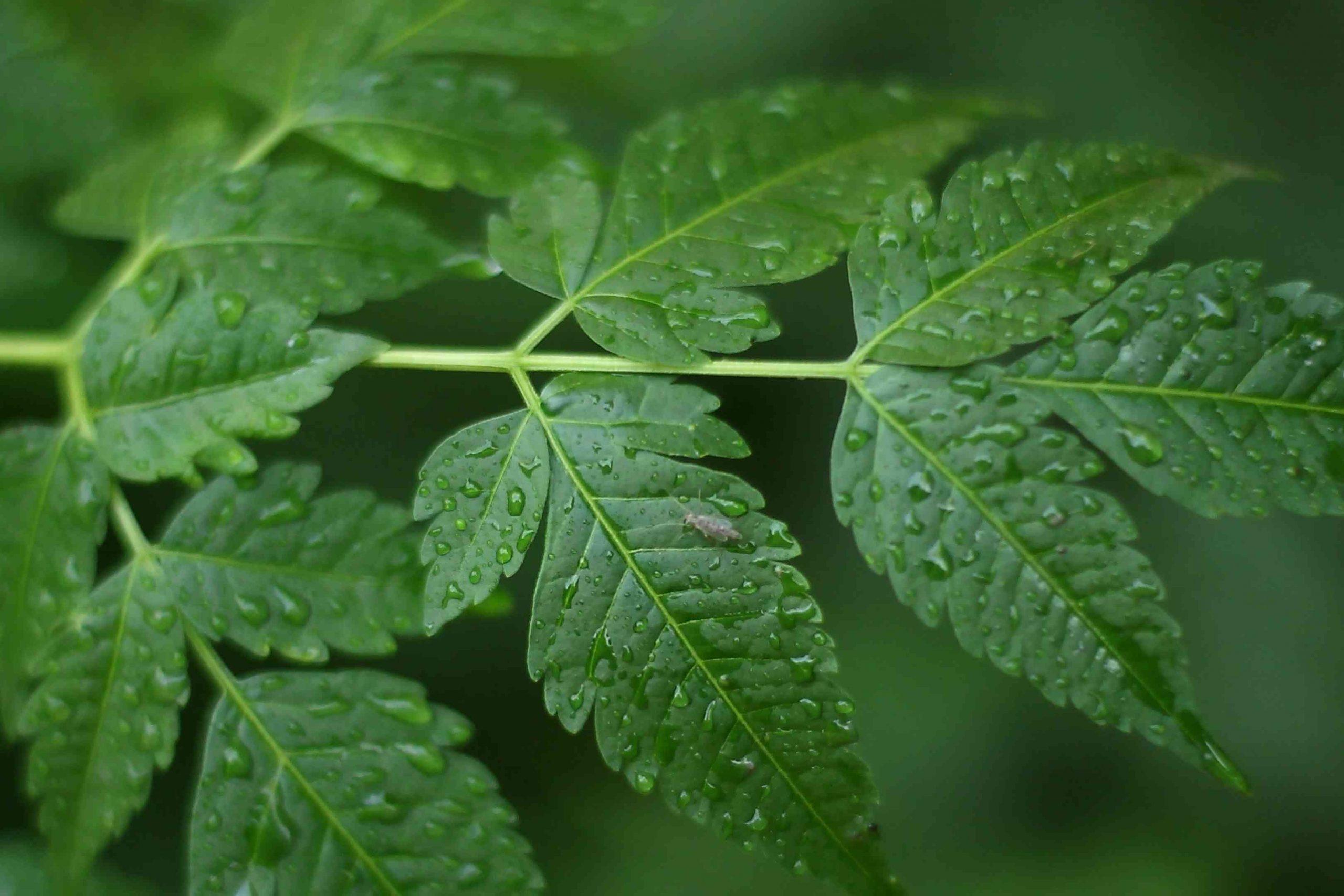Siris/Seto Siris
Albizia procera(Roxb.) Benth.
English name: White siris / Silver Bark Rain Tree
Family: Fabaceae
(Albizzia procera)
English name: White siris
Family: Mimosaceae
Origin and distribution White siris is native to moist deciduous and semi-evergreen hill forests, swamp forests, and lowland savanna woodlands in Asia from northern India through south-east Asia. It is a fast-growing deciduous tree that generally reaches 10 to 20 m in height and has a straight to somewhat curved stem, smoothies light brown to light greenish gray bark, and a spreading thin crown. In Nepal it is found from 650 to 1350 meters.
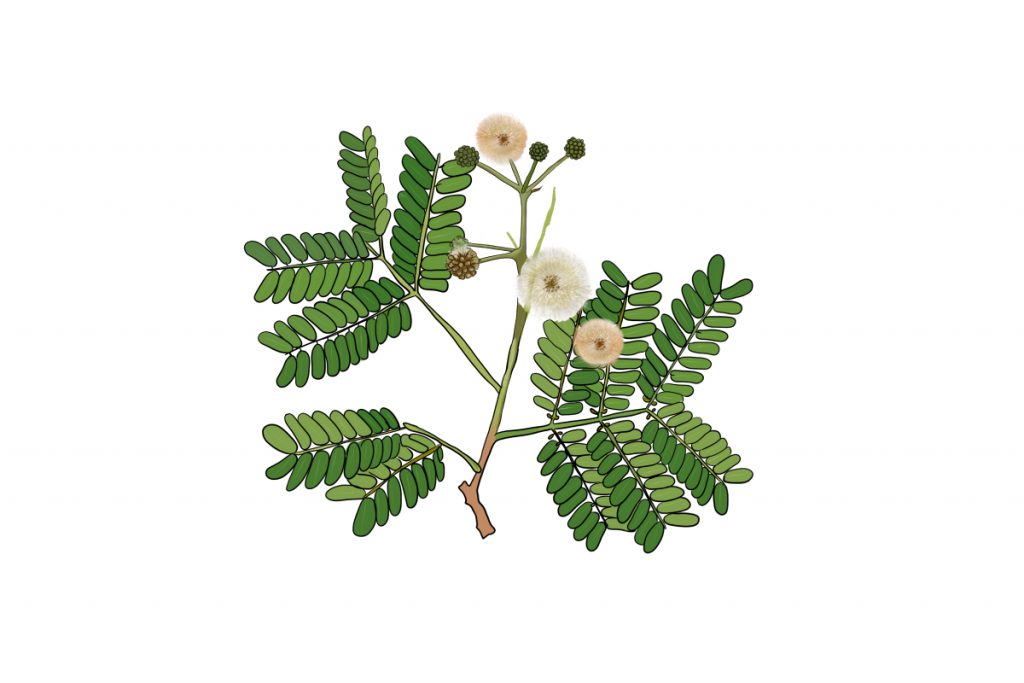
Description
Height at maturity: up to 10-15 m height, sometimes reaching up to 20m.
Form: Medium sized deciduous tree with short trunk and a low, spreading crown. It coppices very well.
Flower and flowering: Flowering generally occurs during the rainy season. The distinctly fragrant (suggesting molasses) flowers form whitish globose heads 20 to 24 mm in diameter, borne on racemes 8 to 25 cm long near the ends of twigs. The fruits are flattened pods 10 to 20 cm long and 1.8 to 2.5 cm broad, changing from green to deep red or reddish brown on maturity; each contains 6 to 12 seeds. The fruits ripen 6 to 9 months after flowering, during the dry season, and usually remain on the tree until the whole twig bearing the pods is shed.
Silvicultural Characteristics
Cultivation: These are cultivated in agro-forest land and along with tea plantation area. The trees are important source of Nitrogen fixation and Mycorrhizal association that aids soil nutrition.
Soil: Prefers a fertile, loamy, moisture-retentive but freely draining soil in full sun or partial shade. It grows best on very moist, alluvial sites of well-drained loams or clays but can tolerate shallow, dry, stony, and sandy soils.
Propagation and plantation
The seeds are obtained from seed pods during May and June. The seeds are spot sown in May in an open position. Germination takes approximately 5 days. The seedlings are planted after only 2 months in nursery. The plants require soil from a mature tree added to the soil mixture at the rate 1:20 (5%) to ensure mycorrhiza establishment. The seed can also be sown directly into prepared pits: seedlings will grow up to 1m in the first year.
There are 20,000 seeds per kg. The seeds germinate 70% when fresh and down to 9% after 10 years of storage. Viability of seed is up to 10 years if stored with insecticide because it is very susceptible to weevil infestation.
Plantation should be done just before the rainy season. Mulching and micorrhizal soil is required for good vigour of plantings.
Products and uses
The timber is used mainly for wheels, house-posts, rice-pounders and agricultural implements. The wood makes very good charcoal. The bark is used for tanning, and from it a gum can be extracted. In some places the bark is pounded up, mixed up with flour and eaten in times of famine.
Urban/Agroforestry uses
It can be planted in the pocket park and manageable sites in urban and agroforestry plots. Cultivation is preferred along the edges of cultivated field.
Other readings
Pachuau, L., Lalhlenmawia, H., & Mazumder, B. (2012). Characteristics and composition of Albizia procera (Roxb.) Benth gum. Industrial Crops and Products, 40, 90-95.
